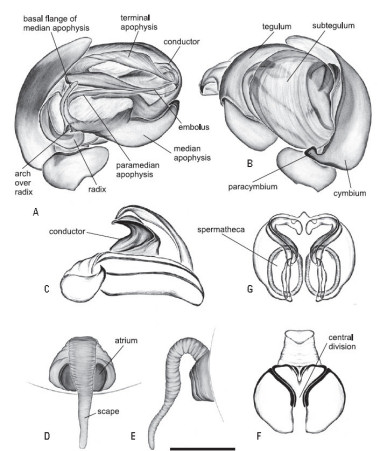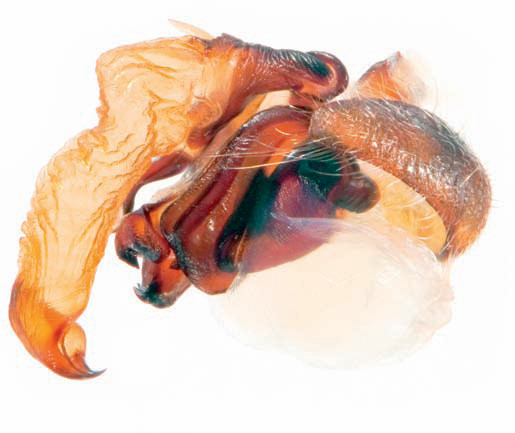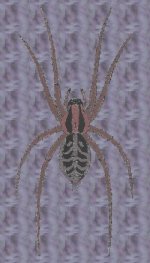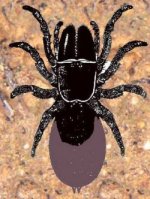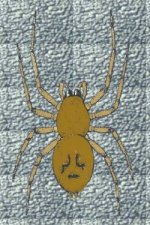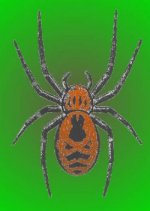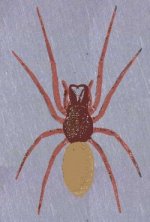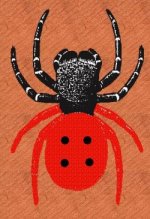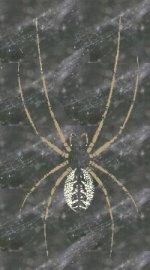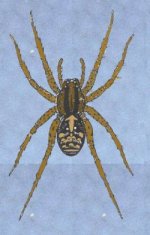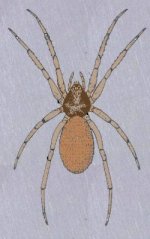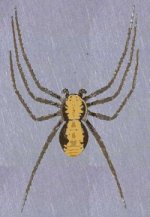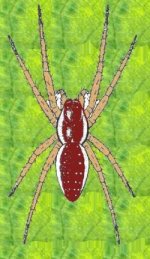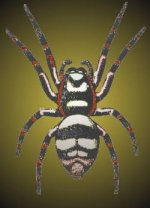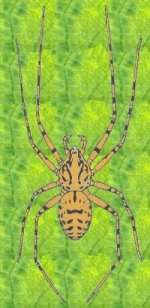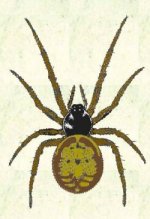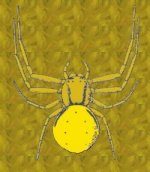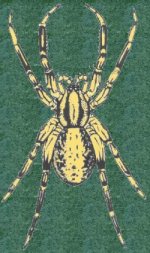Spider identification location chart
| With 41253 (30 April 2010) identified spiders and with probably more this amount of unidentified ones, it is difficult to identify a spider from a picture. The genitals of the male and female spider are used for professional identification. When a species is officially recorded the male and female are intensively described and the genitals are drawn. Often the eye-setting is also key feature to identify a spider. |
|
| Drawings of male and female genitalia of an orb-weaving spider (Araneidae) by N. Duperre (in Framenau et. al. 2010). |
|
| For amateurs it is not always essential to find the exact name a of spider. The two tables, the drawings of spiders and webs below will make it easier to identify a European spider. |
|
| Click around. Success. ß Back |
Left expanded pedipalp of Backobourkia heroine by N. Scharff & J. Coddington (in Framenau et. al. 2010). |
>> Thumbnail page with European spider photos to identify the spider from a picture.
Identification by scientific name
| Inside and outside buildings |
On or close to the ground |
Under stones, logs, litter, et cetera |
Low or medium foliage |
Tall shrubs and trees, under bark |
Rock, walls, caves, banks |
Close to water |
||
| No web, no retreat |
Hunters |
|||||||
| Salticidae | ||||||||
| Oonopidae | ||||||||
| No web, no retreat |
Ambushers, fishers |
|||||||
| Web |
Orb |
|||||||
| Uloboridae | ||||||||
| Web |
Tangle |
|||||||
| Web |
Sheet |
|||||||
| Titanoecidae | Titanoecidae | |||||||
| Burrow, mesh, tubular retreat |
||||||||
Identification by common name
| Inside and outside buildings |
On or close to the ground |
Under stones, logs, litter, et cetera |
Low or medium foliage |
Tall shrubs and trees, under bark |
Rock,walls, caves,banks |
Close to water |
||
| No web, no retreat |
Hunters |
|||||||
| Dwarf-hunting | ||||||||
| Huntsman | ||||||||
| No web, no retreat |
Ambushers, fishers |
|||||||
| Web |
Orb |
|||||||
| Web |
Tangle |
|||||||
| Web |
Sheet |
|||||||
| Rock weaver | Rock weaver | |||||||
| Burrow, mesh, tubular retreat |
||||||||
| Wolf | ||||||||
| Funnelweb spider |
Meshweb weaver |
Orbweb spider |
Purseweb spider |
Sac spider |
|
|
|
|
|
|
| Meshweb spider |
Cell spider |
Lady bird spider |
Ground spider |
Sheet web spider |
|
|
|
|
|
|
| Wolf spider |
Dwarf cell spider |
Lynx spider |
Crab spider |
Daddy longleg |
|
|
|
|
|
|
| Big wolf spider |
Jumping spider |
Spitting spider |
Six-eyed spider |
Stretch spider |
|
|
|
|
|
|
| Scaffold web |
Crab spider |
Cribellate spider |
Burrowing spider |
Wandering spider |
|
|
|
|
|
|

>> Thumbnail page with Australian spider photos to identify the spider from a picture.
(1) With permission from: Framenau, V. W. , Dupérré, N., Blackledge, T.A. and Vink, C.J. 2010. Systematics of the new Australian orb-weaving spider genus Backobourkia (Araneae: Araneidae). Arthropod Systematics and Phylogeny 68 , 79-111 .
Ed Nieuwenhuys, 11 may 2022
5 May 2010,
April 1999
